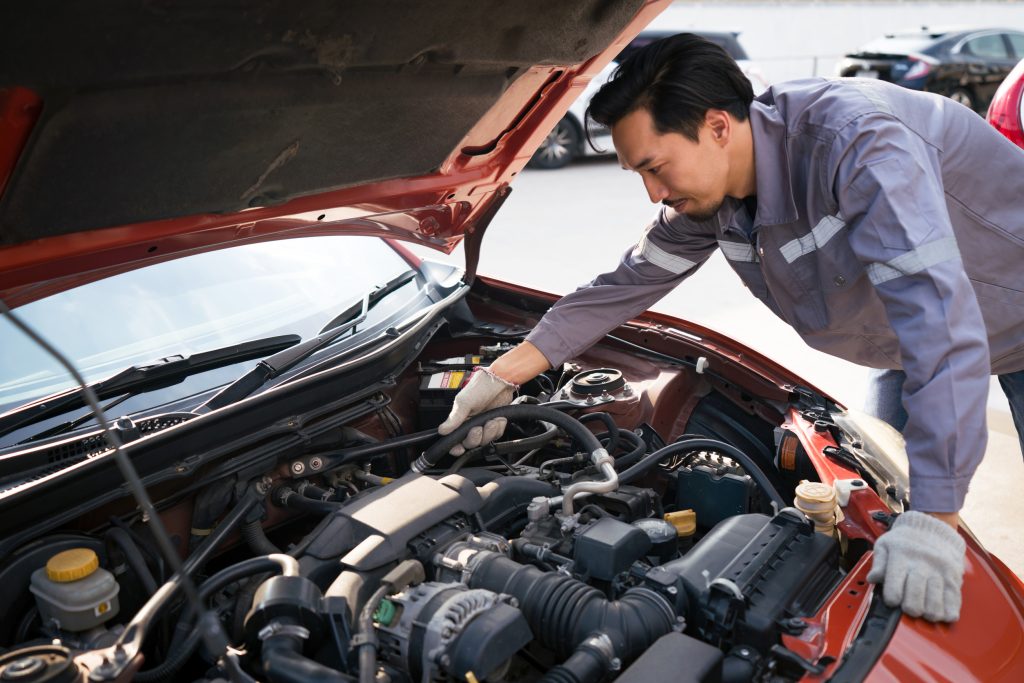Nobody wants to find themselves stranded on the side of the road, but car trouble always seems to happen at the worst possible time. As a former mechanic, I can tell you most of the breakdowns can be avoided by paying attention to basic maintenance. So, rather than spending hundreds of dollars on repairs, you should have a basic understanding of common fixes for your vehicle. If you don’t already, you should learn how to perform these common fixes on your car to prevent breakdowns and take care of your vehicle.
1. Jumpstart Your Car
A dead battery is one of the most common reasons a car won’t start. To jumpstart your car, you need a set of jumper cables and another vehicle with a working battery. Connect the positive (red) clamp to the dead battery’s positive terminal, then the other red clamp to the working battery. Attach the negative (black) clamp to the working battery’s negative terminal and the other black clamp to an unpainted metal surface on the dead car. Start the working car first, then try starting the dead one. If your battery keeps dying, it may be time for a replacement.
2. Check the Coolant
An overheating engine can cause serious damage if ignored. The most common cause is low coolant, so check your coolant levels regularly. If your car starts overheating, pull over and let it cool before opening the radiator cap—never open it while hot. Refill coolant if necessary and check for leaks under the car. If overheating happens often, your thermostat or water pump may need repair. Always carry extra coolant in your trunk for emergencies.
3. Change a Tire
Getting a flat tire is inevitable, so knowing how to change it is crucial. First, find a safe spot and turn on your hazard lights. Use a jack to lift the car and remove the lug nuts before taking off the flat tire. Replace it with the spare, tighten the lug nuts, and lower the car back down. Always check your spare tire’s air pressure to avoid getting stranded. If you get frequent flats, consider investing in better-quality tires.
4. Check the Starter and Alternator
If your car clicks but won’t start, the problem may be the starter or alternator. A failing starter makes clicking sounds, while a bad alternator causes dimming lights and battery issues. If jumpstarting works but the car dies shortly after, the alternator may not be charging the battery. You can test this by checking battery voltage with a multimeter. If the alternator is bad, it needs to be replaced before your battery drains completely. A worn-out starter will also need professional repair.
5. Inspect Your Brakes
Squealing, grinding, or clicking noises from your brakes can signal trouble. Worn brake pads are a common cause and should be replaced before they damage the rotors. If your brake pedal feels soft or vibrates, air may be trapped in the brake lines or rotors may be warped. Check for fluid leaks near the wheels, as low brake fluid can affect stopping power. If your brakes make loud grinding noises, stop driving immediately and get them checked. Regular maintenance can prevent costly brake repairs.
6. Learn to Use a Scanner
A check engine light can mean anything from a loose gas cap to a serious engine problem. An OBD-II scanner can help you diagnose the issue before going to a mechanic. Plug the scanner into the diagnostic port (usually under the dashboard) and check for error codes. Common problems include faulty oxygen sensors, spark plugs, or mass airflow sensors. Resetting the light without fixing the issue can lead to bigger problems. If you’re unsure, take the car to a professional for a proper diagnosis.
7. Replace the Air Filter
If your car suddenly starts using more fuel, a dirty air filter may be the cause. The air filter prevents dirt from entering the engine, but when clogged, it reduces efficiency. Replacing the air filter is simple and can be done in minutes with basic tools. Check your owner’s manual for the location and recommended replacement intervals. A clean filter improves fuel economy and engine performance. If fuel consumption is still high, check for faulty sensors or low tire pressure.
8. Check the Transmission Fluid
Transmission problems can lead to costly repairs if ignored. Low or dirty transmission fluid is a common cause of slipping gears or rough shifting. Check the fluid level with the dipstick and top it off if needed, making sure to use the correct type. If the fluid is dark or has a burnt smell, it needs to be changed immediately. Delayed shifting or strange noises while driving can indicate deeper transmission issues. Regular fluid changes help prevent expensive breakdowns.
9. Get the Alignment Checked
If your steering wheel shakes at high speeds, your wheels may be out of alignment. Misalignment can cause uneven tire wear, poor handling, and reduced fuel efficiency. Hitting potholes or curbs can throw your wheels out of balance over time. A professional alignment service can correct this and extend the life of your tires. If you notice vibrations only when braking, warped rotors may be the issue. Keeping your alignment in check ensures a smoother ride and better control.
10. Upgrade the Headlight Bulbs
Dim or flickering headlights make nighttime driving dangerous. If your headlights aren’t bright enough, replacing the bulbs is a simple fix. Over time, halogen bulbs wear out, reducing visibility. Consider upgrading to LED or HID bulbs for better performance. If new bulbs don’t solve the problem, check the wiring and battery connections. Keeping your headlights bright improves safety, especially in low-visibility conditions.
Keep Your Car Running Smoothly
Many breakdowns are preventable. You need to know how to perform some of these common fixes and maintenance tasks. In the end, it will not only save you money but it will also keep your car running smoothly (and safely). So, learn how to do each of these things and take care of small issues before they turn into major repairs.
Read More
Unique Places Anyone Can Travel to For Less Than $500
7 Genius Hacks to Repair Scratches on Furniture (And Make It Look New)

Drew Blankenship is a former Porsche technician who writes and develops content full-time. He lives in North Carolina, where he enjoys spending time with his wife and two children. While Drew no longer gets his hands dirty modifying Porsches, he still loves motorsport and avidly watches Formula 1.
